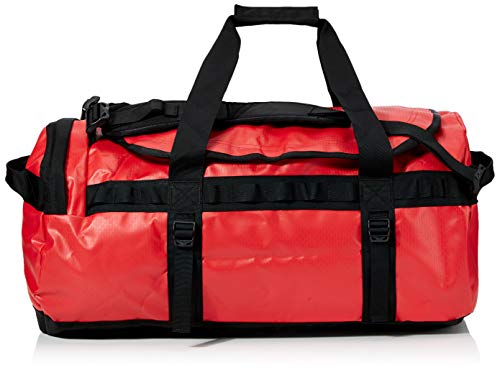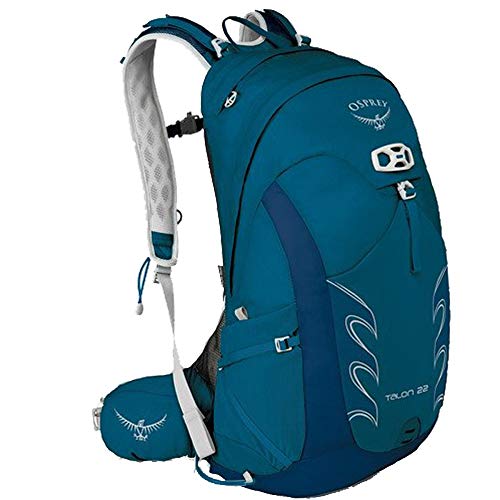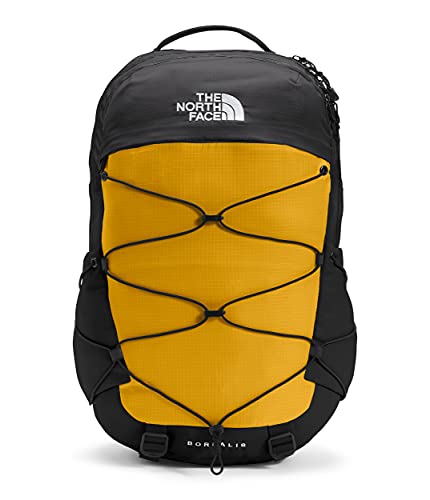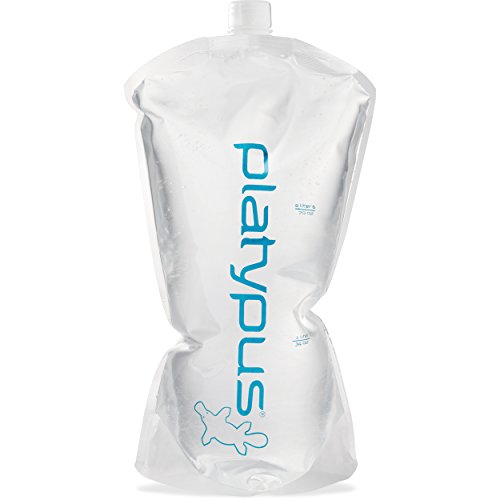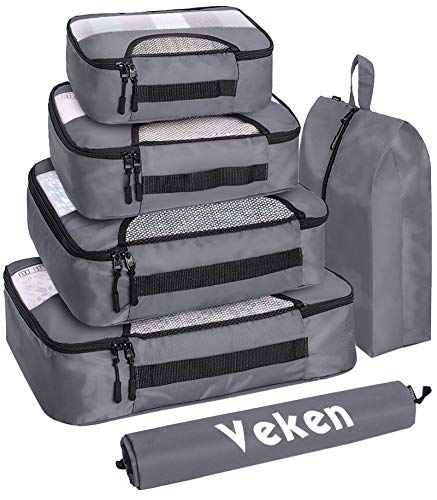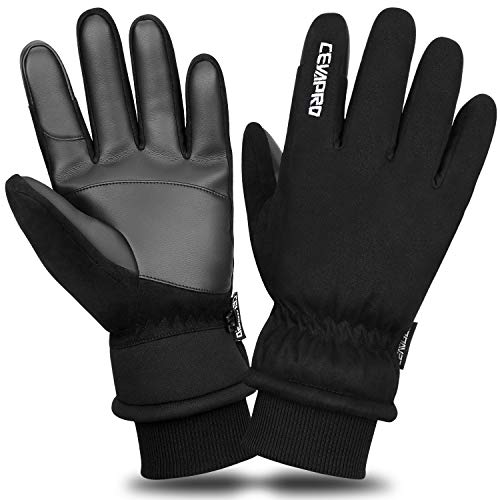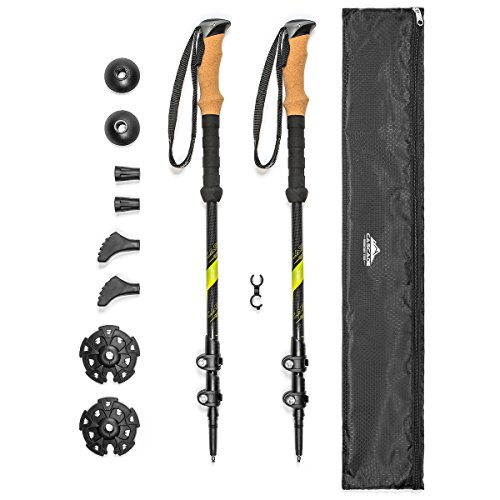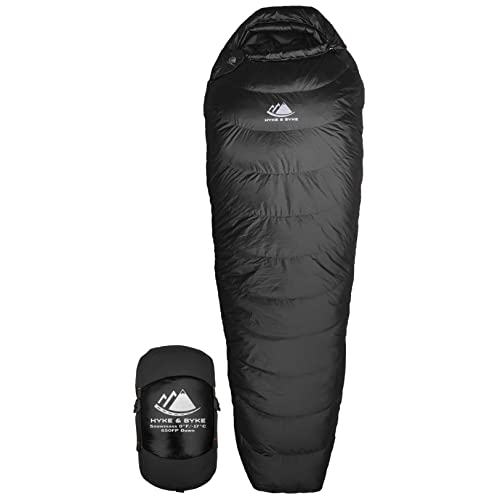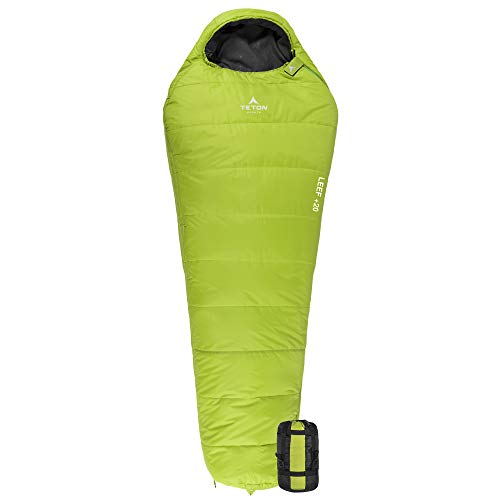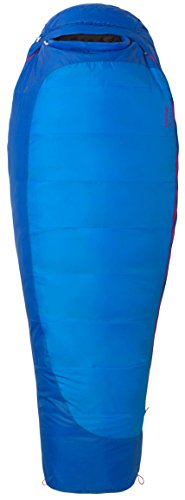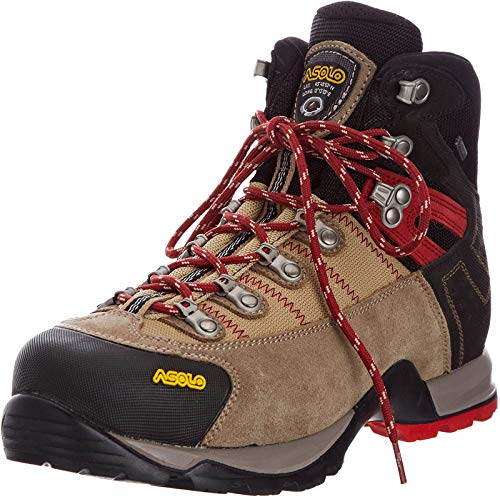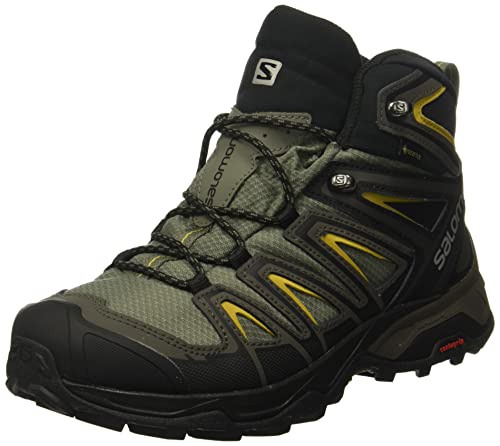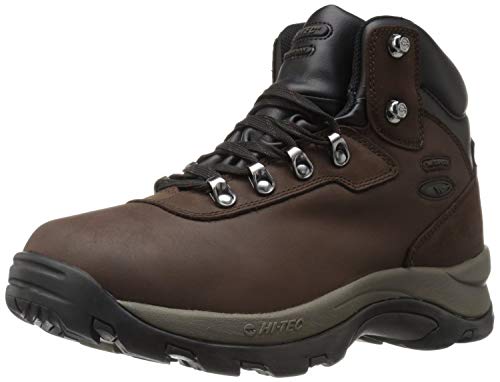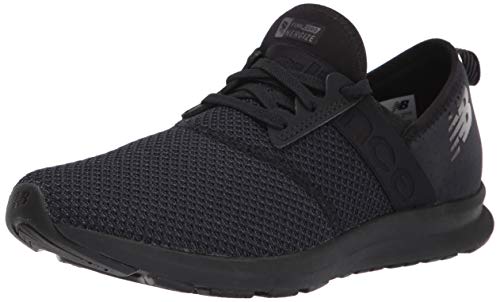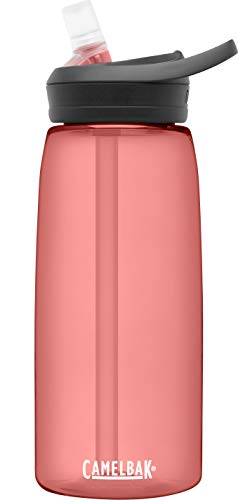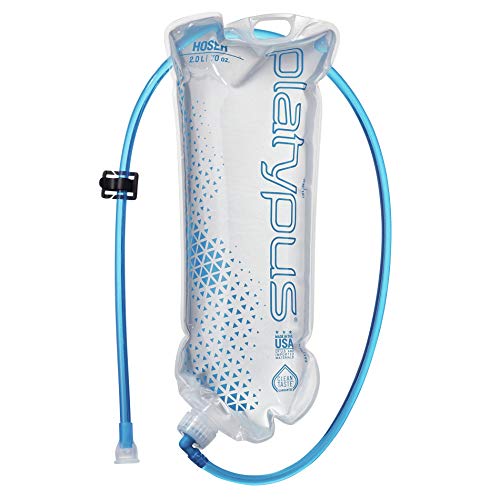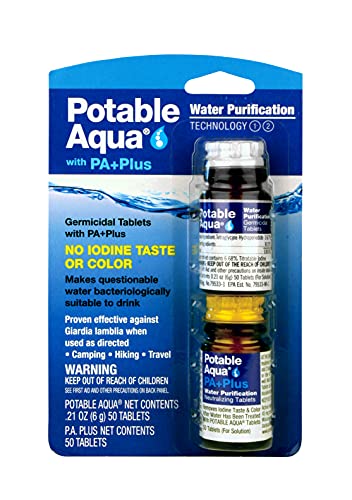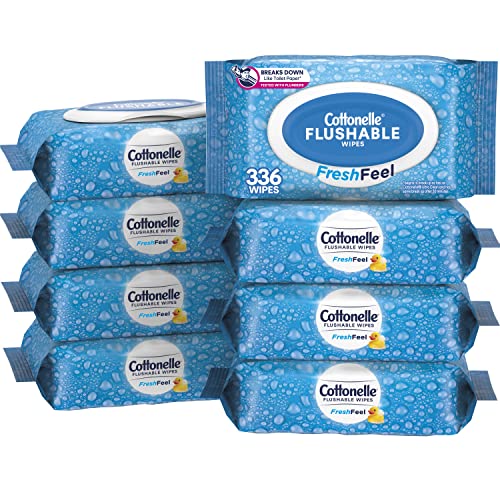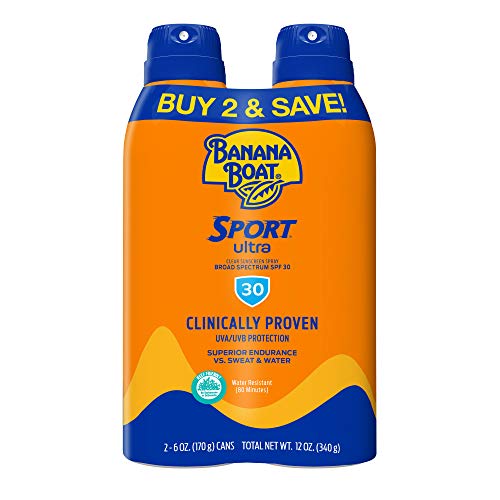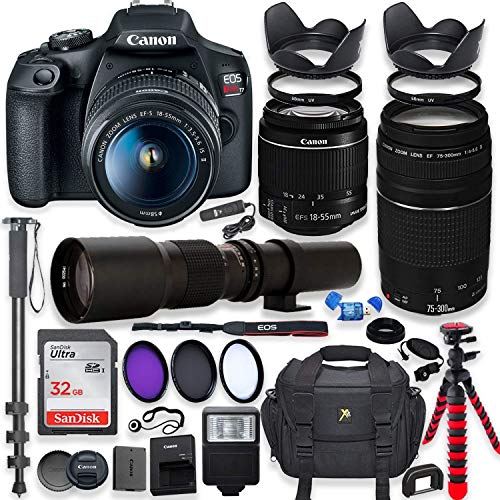Kilimanjaro FAQ
When you are planning to climb mount Kilimanjaro, you will need to know a lot of information before you go. Below are the most frequently asked questions that might help you to plan your trip smoothly.
What do you need to climb Mount Kilimanjaro
What clothes do you need for Mount Kilimanjaro?
Weather can range from warm and tropical at the base of the mountain to freezing on the summit.
In this guide, you’ll learn exactly what clothing you need to hike Kilimanjaro without freezing.
Kilimanjaro Clothes
To ensure that you remain perfectly comfortable when hiking Mount Kilimanjaro, it is critical that you understand the concept of layering with your Kilimanjaro Clothing.
Being able to layer up and layer down as the weather changes are important.
Layering only works if each layer supports the wicking process (allowing moisture to pass from one layer to the next). Layers should therefore hug the skin (i.e. not be too tight, but equally not too loose) and consist of wickable fabric.
Cotton should be avoided as it is hydrophilic, meaning that moisture struggles to pass through and therefore the wicking process stops.
Here are the layers of Kilimanjaro clothing that you need to take with you.
Underwear
Depending on the length of your trek you should bring 4-5 pairs of sports underwear – see these Men’s and Women’s options.
Those made by Jokey (Men’s and Women’s) or Icebreaker (Men’s and Women’s) are excellent. Alternatively, any sporting brand of underwear will work.
For the ladies bring two pairs of sports bras.
Base Layers (Top and Bottom)
As you approach the upper reaches of the mountain you will need to wear a lightweight base layer (or next-to-skin layer) over your underwear. You will not need to wear this layer for the first few days on the mountain (unless it’s very cold). On summit night this is arguably the most important layer as it is the one that comes in contact with your skin.
I recommend these men’s base layers and women’s base layers. I specifically like Smartwool or Icebreaker Base Layers, both make products from 100% merino wool. Their products are super comfortable, of great quality, and provide incredible moisture control.
If you are allergic to wool then Patagonia Capilene base layers are great synthetic alternatives.
For treks less than 8 days, one pair of top and bottom base layers should be sufficient. For treks, over 8 days you should get at least 2 pairs to avoid smelling terrible by the end of the hike. You won’t use this layer every day but will need it during the cold nights and on summit nights.
Hiking Shirts
In terms of trekking shirts, we recommend 4 x short sleeve shirts and 2 x long sleeve shirts. Ideal fabric is a breathable, lightweight, and quick-drying polyester, merino, or nylon. Make sure that your shirts are not cotton.
I recommend these men’s and women’s hiking shirts. I specifically like trekking shirts made by Icebreaker, Craghoppers, Columbia, and Patagonia (see their Capilene range).
Hiking Trousers/Pants
You will also need to bring 1-2 x pairs of hiking trousers – 1 is fine for a 7-day trek, and an additional pair is ideal for treks greater than 7 days. If you like wearing shorts then 1 pair of trekking shorts is worth bringing as well.
I recommend these men’s and women’s hiking pants. I specifically like hiking trousers made by Columbia, Kuhl, Fjallraven, or Craghoppers.
Fleece Insulation Layer
For the colder stretches on the hike and for summit night you should bring one mid-weight fleece jacket or parka top. This is your second layer, or insulation layer, and should be used in your layering system over your base layer, or indeed as a standalone that you wear over your trekking shirt when temperatures start to drop. They also come in great use at night when it can get very cold out.
Fleeces that use Polartec materials are great. Typically Polartec fleeces come in 100s, 200s, or 300s. The 100s are a little light and 300’s too heavy. Two hundred provide great warmth and comfort and are perfect for hiking Kilimanjaro.
Here are some recommended fleeces for men and women. Noteworthy brands include North Face, Helly Hansen, and Patagonia.
A nice feature to look out for in your fleece jacket is a hoody. This can double as an instant balaclava.
Core Insulated Jacket or Third Layer
This is a critical piece of kit for Kilimanjaro. It can get very cold on the summit of Kilimanjaro (see temperatures on Kilimanjaro’s summit).
You want to ensure you have a warm, insulated jacket. This sits over your base and fleece layer to keep your core extra warm.
Here are the options I recommend for Men’s and Women’s (Columbia do a cheap and cheerful option, otherwise go for Marmot, The North Face or Arc’teryx.
Choosing an insulated jacket
Here are the key factors to consider when selecting an appropriately insulated jacket.
Weight and warmth: The weight of a winter jacket can vary from super light (less than 450 grams) to super heavy (more than 1kg). The lightest winter jackets use a down fill and can weigh as little as 200 grams. Down provides the greatest weight-to-warmth ratio. Generally, the lightest jackets (down or synthetic) provide the least warmth and are therefore ideal for moderately cold environments, but not freezing alpine or high altitude environments. Heavy jackets (down and synthetic) are generally the warmest type of jacket but can be cumbersome to transport and trek in. We suggest a mid-weight winter jacket (~500-700 grams) for Kilimanjaro.
Waterproofing: Despite the dominance of down jackets in terms of weight and warmth, they do have a major flaw – as they are much more susceptible to moisture. When down jackets get wet they lose their loft and insulation capacities. This is not to say that a light downpour or even all-day snow is going to destroy the insulating qualities of your down jacket, but in similar conditions or very wet conditions, a synthetic jacket will perform better. The key thing to look for, therefore, is a jacket (down or synthetic) that has an outer fabric that has a high water-resistant capacity. Pertex Shield fabric is the best for down jackets and nylon is great on synthetic jackets.
Versatility: Unless you plan to use your jacket for a particular activity after Kilimanjaro (e.g. ice climbing, snowboarding) we suggest going for a jacket that provides as much versatility as possible (i.e. can be used for many different activities in as many different environments).
Hard Shell or Wind Jacket
I also recommend taking with you a hard shell jacket and some lightweight rain gear. In terms of the hard shell jacket, I recommend these options – Men’s and Women’s.
For a quick rain cover, you might also want to bring a poncho that sits over your body and daypack. Ideal for the lower reaches.
Clothing Not Recommended for Kilimanjaro
You should not bring:
Jeans for obvious reasons – they absorb many time their weight in water, is difficult to trek in, take a long time to dry out, rapidly transfer heat from the body, must we continue …)
Cotton. Wearing cotton shirts on the lower reaches is fine but in general, we would avoid cotton altogether. It absorbs moisture and blocks breathability
Still, have questions about Kilimanjaro clothing? Leave a comment below and we will respond within 24 hours.
what type of Kilimanjaro backpack do you need?
Should you take a backpack for Mt Kilimanjaro? Surprisingly, the answer is no. There are two types of bags that you need to have on your Kilimanjaro hike – a duffle bag and a daypack. You can obviously take a backpack instead of a duffel, but backpacks tend to have limited capacity (ideally you want 80L or more), and waterproof options are also limited. The type of bag you choose (whether a backpack or duffel) is important as it will hold all of your gear, including your sleeping bag. Here are the most frequently asked questions we get about Kilimanjaro backpacks? Once you’ve read this article I recommend checking out our packing list for Kilimanjaro.
Kilimanjaro Backpack FAQs
Can I take a backpack instead of a duffel bag?
Yes, you can take a camping backpack instead of a duffel bag. But unless you’re proficient at packing light, you will need to have a backpack with at least a 70-liter capacity. Here are some large-capacity backpacks.
Do I need to carry my backpack or duffel?
Generally, no.
Your main Kilimanjaro bag (whether a duffel bag or backpack) will be carried by a porter (read about Kilimanjaro porters) who will transport your gear from one camp to the next.
Porters carry bags on their heads so it is important that your bag is soft and weighs no more than 20kg when fully loaded (some trek operators limit the weight to 15kg fully loaded).
What characteristics should I look for in a bag?
- Ideally, greater than 80 liter capacity (hence why a duffel is a preferred choice)
- Constructed from waterproof laminate material to ensure your gear stays dry. We recommend packing your gear into separate plastic bags or packing units (see below) to provide extra waterproofing and easy access to sorted gear
- A strong zipper system that is not susceptible to breaking and can be easily locked. Take a small lock to secure your bag
- A hand and shoulder strapping system to provide extra versatility
What duffel bag do you recommend?
The market leader for large-capacity duffel bags is The North Face and Helly Hansen. Both bags are of great quality. We recommend you go for the 90L versions.
If you are in the UK, we recommend the TYTN duffel bag, which is specifically designed for expedition hiking (unfortunately it is not available in the US).
See more duffel bag options here.
What daypack should I take?
In addition to your duffle bag (which is carried by your porter), you will be carrying your own daypack. In your daypack, you should keep all important gear (suncream, sunglasses, snacks, water), personal (money, passport, etc.), or small breakable items (camera, phone, etc.).
Your daypack should be small and lightweight. The lighter the better.
Key characteristics to look for in a good daypack:
- Compression straps to reduce weight stress on your back
- Side mesh pockets for easy access to your water bottle and other useful stuff
- Ensure your backpack has a rain cover
Best Daypack: Osprey Talon 22
The Osprey Talon 22 is a brilliant day pack that will easily fit all your essentials in a comfortable and well-supported bag.
The Talon is definitely a leader in the lightweight market, providing versatility, high performance, and quality design in a neat multi-purpose pack. The daypack also features a special compartment to put your hydration bladder.
Two sizes are available: S/M (20L) and M/L (22L) and the bag retails for ~$100/£70. Both sizes are fine for Kilimanjaro.
Remember to grab an Osprey Hi-Visibility Raincover and Osprey Water Reservoir as well if you decide to get this day pack.
Best Value Daypack: The North Face Borealis
The North Face Borealis is a multi-purpose day pack. It includes all the key features that are required for climbing Kilimanjaro (including a hydration bladder compartment), as well as useful non-trekking features, such as a laptop compartment.
The Borealis has a 29L capacity and comes in at a cheaper price than the Osprey Talon.
Available in both men’s and women’s variants.
What other Kilimanjaro backpack accessories should I take?
Raincover
Depending on what time of the year you are hiking, there is a possibility that you will encounter rain on the mountain. You want to avoid getting your daypack wet. A good rain cover is a worthy piece of kit to have as a precaution.
If you are going with the Osprey Talon Backpack we would also get the Osprey Hi-Visibility Raincover, which retails for the standard backpack rain cover price and is super reliable. NB: select the right size cover (i.e. 19-30 liters).
Hydration Bladder
If you decide to go with a daypack that can hold a hydration bladder, then we suggest you purchase the best hydration bladder on the market. There is nothing worse than a leaky bladder!
The Platypus Big Zip Water Reservoir is undoubtedly the best product, hands down!. Where Osprey is strong in backpacks, Platypus rock the hydration bladder. The Platypus comes in a 2L and 3L version, the latter is ideal for Kilimanjaro.
Travel Bag Organisers
A pro tip that we have used to great effect on Kilimanjaro is travel bag organizers, which can be used to source and separate your gear for better backing and access. They also provide a great way to separate wet or dirty gear.
Alternatively, if you want to go completely cheapo then use clear plastic bags to separate your gear.
Small TSA Lock
For obvious safety purposes, you should be locking your Kilimanjaro bag. Here are some TSA locks.
What are the hands and walking gear?
There are two types of gloves you should take on your Kilimanjaro trek – inner and outer gloves.
Like base layer clothing, inner gloves provide the next-to-skin insulation that is critical when trekking in cold temperatures (and it will get really cold on the upper reaches of Mount Kilimanjaro). See our guide on Kilimanjaro temperatures and weather.
Outer gloves are thicker, waterproof, and provide the shell protection needed to prevent freezing hands.
In addition to gloves, you will also need to take trekking poles.
Below we provide glove and trekking pole recommendations.
Kilimanjaro Gloves
Inner Gloves
In terms of inner gloves, you want to make sure to get a pair that has great wicking properties (synthetics, merino wool, or even silk) are good.
Do not go for cotton inner gloves as these will restrict moisture transfer. You should also make sure that the gloves provide a good thermal lining and are lightweight.
We like using trail running gloves like these. We also recommend New Balance Gloves.
Outer Gloves/Mitts
We cannot stress the importance of having good outer gloves or mitts. Your hands will be the first to start freezing on summit night. Cold hands are super debilitating and painful.
The perfect outer gloves provide warmth and are waterproof, without being cumbersome or too bulky. Essentially you want gloves that provide some dexterity, whilst also providing exceptional warmth, water resistance, and durability.
Based on these criteria here are some recommend insulated gloves (Men’s and Women’s) – I specifically like insulated gloves from Outdoor Research or Black Diamond.
Trekking Poles
Trekking is one exercise that puts serious strain on your major leg joints and knees. This is particularly true on Kilimanjaro where the average trek length is 7 days, with 5-8 hours of hiking each day. Add in the rough terrain that undulates frequently and you can see why most people complain of sore legs.
The best way to reduce the impact of long-distance trekking on your knees and joints is by using trekking poles. In fact, good trekking poles can reduce the impact on your knees by up to 25% – as assessed in a 1999 study by The Journal of Sports Medicine.
We recommend using trekking poles as a mandatory hiking accessory on Mount Kilimanjaro, as they offer better balance on trails and reduce stress on joints during ascents and descents
Key characteristics to look for in a pair of hiking poles are:
- Weight: Medium-weight poles (~350 grams) tend to be better at enduring long and sustained treks across rough terrain as they are often more durable.
- Adjustability: Good trekking poles should be fully adjustable. There are two main adjustable systems – lever-locking and twist-locking. We recommend lever-locking systems as they are easier to use and more durable (despite being slightly heavier)
- Grip: Pole grips are usually made from cork, rubber, or foam. Cork is a good grip material and super durable, but not as good as rubber in terms of insulating warmth (which is a factor on Mount Kilimanjaro). Foam is the least durable type of grip but the best at wicking moisture away from the grip and hands. If we were pushed to recommend a grip type for Mount Kilimanjaro we would say rubber or form, for their warmth/wicking properties, but cork is still our overall favorite for its durability and lower susceptibility to chaffing the hands and causing blisters.
- Material: The Pole itself is usually constructed from lightweight aluminum or carbon fiber (which is lighter than aluminum). We don’t have too much of a preference here, as long as the structure is sturdy and mid-weight.
Recommended Trekking Poles
For a quality trekking pole that comes at an affordable price, we recommend the Cascade Trekking Poles.
The Cascade poles come in two variations – Carbon Fiber and Aluminium). The former is lighter than the latter but a little more expensive. Both come with a quick-lock system and use a combined cork and EVA grip for superior durability.
Alternatively, if you have a larger budget then it’s worth checking out the Black Diamond trekking poles or the Leki trekking poles.
What are the Kilimanjaro sleeping bags and Accessories?
A warm 4-season sleeping bag is an absolute must for Mount Kilimanjaro, regardless of the season you plan to trek.
You can guarantee freezing nights on the upper reaches of Kilimanjaro (>3,000m) and without a warm sleeping bag, you will be uncomfortable and cold.
Below we have set out the key characteristics to look for in the best Kilimanjaro sleeping bags, as well as providing three recommendations based on price and performance.
It is possible to rent sleeping bags from your tour operator, but in general, we recommend you bring your own as reusing a sleeping bag that has been previously used by lots of smelly trekkers before you can be a rather unpleasant and unhygienic experience.
Of course, if you only plan to use your sleeping bag just once then renting, or borrowing from a friend, is the preferable option.
Sleeping Bags – Key Characteristics
Down vs Synthetic
There are two types of sleeping bags – goose or duck down, and synthetic. In general down sleeping bags are better quality, lighter, and more comfortable. They are however more expensive than synthetic sleeping bags.
To decide between down and synthetic the two key considerations are weight and cost.
The cost calculation is really dependent on your personal budget and more importantly, the frequency of camping and trekking.
We recommend going with a down sleeping bag if you plan to do frequent unsupported camping and trekking adventures (2-4 a year) and want a product that is reliable and a long-term investment. If you are trekking Mount Kilimanjaro as a one-off and might only use the sleeping bag again in a few years for another trek, then it might make sense to go for a cheaper synthetic option, or indeed rent a bag.
Warmth
As we mentioned above, the nights on Kilimanjaro, or indeed on any high-altitude trekking expedition, get very cold. Hence your sleeping bag needs to be able to cope with extremely cold temperatures. We recommend sleeping bags that have a rating at a minimum of -10 degrees Celsius (14 Fahrenheit).
It is however better to have a warmer sleeping bag than a colder one – you would rather be too warm than too cold.
Shape and Design
The best hiking sleeping bag design is the mummy shape as it is crafted to fit the contours of the human body, and hence provides better insulation than standard rectangular-shaped sleeping bags.
Most adult body types fit into a mummy-shaped sleeping bag, but if you have a uniquely short, tall or wide-body shape then make sure you pick a size of sleeping bag that will fit your body contours snuggly.
The other two design features to look out for are an insulated hood that can be pulled around your head with a draw cord, and a two-way zipping system that improves insulation and allows for unzipping at both ends of the sleeping bag.
Sleeping Bag Recommendations
Hyke & Byke Snowmass Sleeping Bag
Hyke & Byke make great sleeping bags.
Their Snowmass range offers an ultra-lightweight 4-season unisex sleeping bag that is ideal for Mount Kilimanjaro. Rated to 0 Degree F (-17 Degree C), this 650 fill hydrophobic down sleeping bag will keep you warm and comfortable on Kilimanjaro.
It is available in three sizes (Long, Regular and Short), so can cater to people of different heights, and there are multiple colors to choose from.
TETON Sports LEEF
For awesome value for money (i.e. under $100), we recommend the TETON Sports LEEF.
The LEEF is a synthetic sleeping bag but is still lightweight (4.2 pounds (1.90 kg) and very warm. We recommend going for the 0F (-18C) version as the 20F (-7C) is likely, not warm enough for Kilimanjaro.
Marmot Trestles
The Marmot Trestles is rated to 0F (-17C), which makes it excellent for Mount Kilimanjaro.
The Trestles includes a synthetic fill and offers lightweight warmth and engineering that balances room to move with excellent insulation efficiency.
This sleeping bag will keep you comfortable on the slopes of Kibo.
Other Sleeping Accessories
Inflatable pillow (optional)
An inflatable pillow that can quickly be inflated and deflated for storage is useful. Equally, you could just use a pile of clothes.
Thermal mat (optional)
Your tour company should provide a thin mattress on which you can set your sleeping bag. If you are concerned about the cold and want additional cushioning we suggest bringing a thermal sleeping pad that can be stored as a small roll in your duffle bag.
What are hiking boots for Kilimanjaro?
Kilimanjaro Boots & Footwear
The Kilimanjaro boots and footwear you take on the mountain are very important.
In this detailed article, we outline the key characteristics to look for in a pair of boots, as well as provide recommendations on good but affordable shoes.
Remember your feet are what get you to the top of Kilimanjaro and back so make sure you follow the guidance in this article or risk having sore feet, blisters, and lost toenails.
See our guide to hiking Mt Kilimanjaro and download our Kilimanjaro equipment list.
Kilimanjaro Hiking Boots
There are three key characteristics to look for in a pair of trekking boots. The first two – fit and quality – are decided at the point of purchase. The third – use – is entirely dependent on you.
Get any of these three characteristics wrong and you risk getting sore feet, injuring your back, losing toenails, and enduring painful blisters.
Let’s deal with each characteristic below:
Fit
The best way to test good fit is to place your foot in a boot and slide it all the way forward until your toes hit the front of the boot (make sure you are wearing an average cushioned sports sock). Then take your index finger and slide it down the back of the boot between your heel and the boot support.
A perfect-fitting boot will allow you to squeeze your finger in without too much resistance. If you cannot squeeze your index finger down the back of the boot, then unfortunately the boot is too small. If you find that your index finger fits too easily into the back of the boot, then the boot is likely too big. A snug fit, with your index finger in the back of the boot, is just right.
Note: this is not a science, but a good approximation for good-fitting boots.
Quality
Good quality doesn’t have to be expensive, in fact, you can get some affordable trekking boots that are of great quality. Good quality boots have the following design features:
- Medium to high tops for study ankle support. The higher the top the heavier the boot
- The sole of the boot should have a high rubber content and deep lugs for better traction – the deeper the lugs, the heavier the boot
- Medium to heavy weight – heavy boots are good for durability and cushioning, but the extra weight of the boot can be pretty tiring to hike in. We recommend going for a medium-weight boot
- Waterproof – this is pretty standard today but always good to get boots that use GoreTex material for improved waterproofing. Combined with waterproof socks and you can be sure your feet will stay dry.
- The lacing system should incorporate D-Strings and speed hooks for better ankle support and fast lacing
Use
Once you have got yourself a good-fitting pair of boots that have similar characteristics to those set out above, then the task is to break your boots in. Do not, under any circumstances, arrive in Kilimanjaro with brand new hiking boots that you have never worn.
The best way to break boots in is to wear them as often as possible before your hiking date. During that time you should undertake 2-3 long-distance treks (4-5 hours a day) in your boots.
Recommended Hiking Boots for Kilimanjaro
Best Overall Boot: Asolo Fugitive (Men’s) or Asolo Stinger (Women’s)
Asolo makes some of the best quality hiking boots on the market.
The Asolo Men’s Fugitive or Asolo Women’s Stinger is all-around great trekking boots, ideal for long-distance hiking in summer or winter. The GoreTex lining provides very good waterproofing and breathability. They are also lightweight.
If durability is your thing, then the Asolo Power Matic’s will last you many good years of trekking and provide excellent comfort and durability. Mid-weight. Brilliant waterproof qualities with leather and GoreTex lining.
Best Value Hiking Boot: Salomon Quest
For great affordability, quality, and all-around performance we recommend Salomon hiking boots – specifically the X Ultra or Quest range (Men’s and Women’s). Sold as a day hiking boot, we have seen these babies used on many long-distance treks, like Kilimanjaro.
Don’t expect long-term durability but you should get a couple of years of good trekking in before they need to be replaced. Key features: Mid-weight with a GoreTex membrane for waterproof breathability.
Cheap and Cheerful Hiking Boot: Hi-Tec Altitude IV
At its price range, the Hi-Tec Altitude (Men’s and Women’s) is probably the best hiking boot on the market.
You can be assured of great comfort and durability. The outer material is waterproof full-grain leather. Very light-weight boot.
Other Important Footwear
Trainers or Trekking Sandals
Each evening when you reach your camp, the first thing you are going to want to do is to take off your trekking boots, and not have to put them back on until the next day.
The trouble is you are going to want to walk around the camp and perhaps do some exploring in the surrounding area.
The solution: bring with you basic hiking shoes or trainers that you can slip on in camp, and that can double as a trekking alternative shoe for flat terrain.
Good and affordable brands include Merrell, Keen, and Salomon. See Men’s and Women’s
Hiking Socks
It is important that you bring good quality hiking socks. You should avoid cotton or cotton-blend socks as these absorb and retain moisture, keeping your feet damp and making them susceptible to blistering.
We recommend 5 x Wool trekking socks as these are the best for wicking moisture away from the foot. The best trekking sock manufacturers include Darn Tough and Smartwool (Men’s and Women’s). Both brands manufacture their socks from really soft merino wool which is great for comfort and performance. If you are allergic to wool we would go for acrylic or an acrylic-blend alternative like those from Wigwam (Men’s and Women’s).
Key characteristics to look out for include:
- Flat seams. Bulky seams are prone to increased friction which results in blisters
- Thick socks as they provide more cushion for the foot
- Snug, not tight, fit
When the inner soles of the boot start to contour the bottom of your foot then you can be confident that your boots are well worn in.
What Kilimanjaro Accessories to bring?
Kilimanjaro Other Useful Bits And Bobs
Kilimanjaro Accessories
Water Bottle
A good water bottle or hydration bladder is a must.
To ensure you remain well hydrated and stave off the symptoms of altitude sickness you need to drink between 2-3 liters of water each day.
We recommend drinking 500ml before starting your trek in the morning and then refilling before you set off.
To carry 1.5-2 liters of water you will either have to take 2x 1L water bottles or use a 2-3L hydration bladder, which sits inside your daypack with a tube direct to your mouth.
In terms of water bottles, we recommend the plastic CamelBak Eddy Water Bottle
which comes in 0.75L and 1L variations.
Hydration Bladder
It is common for water to freeze during summit night.
To avoid having frozen water make sure that each bottle is well insulated. A good solution involves placing your water bottles inside a thermal sock and then keeping the bottle inside your daypack (instead of being exposed to the elements in the mesh pockets that sit on the outside of most daypacks). Another useful tip is to keep your water bottles upside down as liquid freezes from the top.
If you have a daypack that can hold a hydration bladder then we recommend either the Platypus Water Reservoir – it’s undoubtedly the most reliable and best value on the market, or the Osprey Hydration Bladder – also an excellent product. Both water bladders come in 3L versions which are perfect for Kilimanjaro.
Water Purification Tablets
Water on Kilimanjaro is collected from mountain streams by porters during your trek. It is very important that you treat this water with iodine purification tablets to avoid getting an upset stomach. The best Kilimanjaro operators will boil and treat your water, but it is worth taking every precaution as an upset stomach can result in ending your climb early.
We recommend taking 1x pack of 50 tablets. These Potable Aqua Water Purification Treatment Tablets are good.
Iodine makes water taste a little unpleasant. Moreover, just drinking water can result in a rapid fall in plasma sodium concentration which accentuates dehydration. Add a sports drink isotonic or hypotonic solution (which aids water absorption into the blood and body cells), improves flavor, and provides an energy boost. We recommend Gatorade.
Other Accessories
Wet Wipes
Trekking Kilimanjaro is a strenuous exercise. By day two you are going to be a ‘smelly’, sweaty human being.
Your guides will provide you with a small bowl of tepid water and soap after each day’s trek as well as first thing in the morning; however, using a bowl of water to clean yourself is not the easiest thing to do. Much easier is using wet wipes to clean your hands and rub yourself down.
One pack of wet wipes should be more than sufficient.
Sweat Resistant Sunscreen
Camera
The scenery on Mount Kilimanjaro is extraordinary.
Bring a decent camera to capture the experience. Here is a great value SLR Camera, or if you want to go super light and capture awesome videos we recommend taking a GoPro.
Click here to see our review on the GoPro and watch some awesome Kilimanjaro videos.
Spare batteries
We recommend taking spare batteries for your headlamp and camera. Running out of power on your camera just as you want to take that killer summit picture is not fun. A spare SD Card for your camera is also a good idea. There are no charging points on the trek so you might want to bring one of these backpack solar chargers which are getting popular on Kili.
Ear plugs
If you are a light sleeper we recommend taking ear plugs. The stillness at night means that sound travels really well. Many people stay up late sharing trekking stories, and those who get to bed early sometimes snore, which can make sleeping difficult. Moreover, your porters and guides are usually up early getting ready for the new day’s hike. If you want to ensure you get that extra 30 minutes of sleep in the morning, ear plugs are a useful addition to your gear.
Zip lock bags
Your day pack is going to be exposed to the elements during your hike. Exposure to dust and rain is common. To protect your valuables (i.e. wallet, money, binoculars, camera, etc.), we suggest taking a few zip-lock bags.
Small lock
Your duffle bag will be carried by porters. Typically your gear will be safe but we still recommend taking a bag lock to secure your belongings.
Energy bars
Taking energy bars on your trek is the easiest and most effective way to snack and keep your energy levels up. We suggest taking 2-3 energy bars for every day you are on the mountain (so if you are doing a seven-day hike that would mean you bring twenty-one energy bars). Make sure your energy bars are not predominately milk-based as they will freeze on summit night, making them impossible to chew. High-energy oat bars are good.
Energy drink supplement
Many people don’t like the taste of water, especially after iodine has been added. An energy drink supplement will mask the taste of iodine as well as provide you with additional energy during your climb. We recommend using an isotonic or hypotonic Octane solution. A good rule of thumb is to drink half a liter of water first thing in the morning and then continue to drink another 2.5 liters during the hike. Gatorade is a good isotonic drink supplement.
Pee Bottle (for the ladies)
We only hear good things about this from the ladies. See options here.
Medications
Many people go wild on taking with them various medications. Others bring virtually nothing. The amount and type of medications you take are really up to you. We suggest taking these three medical supplies as they are the ones that usually come in most handy. 1. Paracetamol for headaches. 2. Valid for nausea or vomiting. 3. Imodium for diarrhea. Note: your guide will be carrying a first aid pack that should have most medical supplies in it.
Blister Plasters
Trekking up to 5-7 hours a day can result in painful and debilitating blisters. Treat blisters early and take immediate measures to reduce friction. When applying a plaster, make sure you remove excess moisture from the blistered area and use a good blister plaster-like those from Leukotape P or Compeed. It’s a wives tale that duct tape works well. In fact, duct tape is not breathable and hence the skin saturates under the tape and the blister worsens.
Insect Repellant
A basic insect repellant is important. Make sure to get a reliable brand that has a high Deet content – greater than 90% (Repel makes a great product). Tanzania is a malaria zone. You will not be at risk when on the mountain but will be at risk before and after your climb. You should take malaria tablets if you plan to stay in Tanzania before or after your trek.
Trekking Towel (optional)
A medium-lightweight trekking towel to dry your hair, face, and hands after a rainy day trekking.
Toilets and toilet paper
Toilets on Kilimanjaro are notoriously bad. You can decide to brave the toilets or you could request that your tour operator organize a portable loo which will be carried and set up at each camp by a porter. This is completely up to you. We have used both and although a portable loo is pleasant, we feel it removes the authenticity of trekking on Mount Kilimanjaro. Portable loos can usually be hired for approximately $150-$200. You will also need to bring your own toilet paper – one roll should be sufficient.
Can I rent Kilimanjaro gears in Tanzania?
Yes, you can rent equipment for Kilimanjaro from tour operators or from local gear shops in Moshi and Arusha. The quality and variety of this gear can vary dramatically. At a minimum, you should bring your own layered clothes (including base layers and an insulated hiking jacket), worn-in hiking boots, warm gloves and a beanie, and a water bottle. You can hire hiking poles and a sleeping bag, so if you don’t have these items and you don’t want to purchase them, then hiring is a good option.
Do I need to bring a tent and camping gears for mount Kilimanjaro?
Do I need any specific Kilimanjaro kit for the western breach?
The Western Breach is the most technically challenging approach to Kilimanjaro. It was closed for a short period in early 2006 after a fatal rockfall claimed the lives of three trekkers. It has however re-opened with a new and safer route configuration and is steadily growing in popularity.
For trekkers interested in this route, we recommend reading our Western Breach route guide.
There are some specific Kilimanjaro kit requirements for the Western Breach that you should be aware of. Many of these items are not mandatory, however should condition on the Western Breach be adverse you may need the following:
- Climbing helmet to protect your head from the potential risk of falling rocks
- An ice axe and point crampons – it is unlikely that you will need these items, however, if you are climbing during the wet season (see Kilimanjaro weather) it is likely you will encounter sub-surface ice from refrozen meltwater and deep snow. Usually, your guides will have the correct gear to cut steps on these sections (we recommend you confirm with your tour operator exactly what gear you will need for the Western Breach)
It is very unusual to need a rope or a climbing harness. Again we recommend you confirm with your tour operator which Kilimanjaro kit list they recommend you bring should you decide to climb the Western Breach.
Do you provide oxygen on your climb?
What is included and what is not included to your trips?
Items & Services Provided for the Kilimanjaro Trekking
The items and services listed below are included as standard on all-out fixed dates and private climbs.
Accommodation & Logistics
• Return airport transfer from Kilimanjaro International Airport to the hotel.
• Two nights of bed and breakfast hotel accommodation at the hotel based on twin occupancy.
• Return transfer from the hotel to the gate
• Return transfer from gate to the lodge.
• Excess gear storage at your lodge
• A KAS liaison officer on standby should you require anything during your stay in Arusha
On the mountain
• An expedition briefing prior to leaving for the mountain
• Kilimanjaro park entry permits and park camping permits
• Mountain rescue permit
• Staff wages
• Bilingual guides
• Expedition porters and cooks
• Hot breakfast, a hot lunch, a hot evening meal, and snack food available at camp
• Boiled water for drinking and washing
• Private toilet tent
Safety and Equipment
• Helicopter evacuation registration fee
• Short wave radios, a satellite phone, a large expedition first aid kit & Oximeter
• Medical oxygen and a means of evacuation from the mountain
• High-quality sleeping tent
• Mess tent with tables and chairs
Items and services not included as standard
• Flights from your home country to Kilimanjaro International Airport
• Tanzanian entry visas
• Tips for mountain staff
• Drinks and food when not on the mountain
• All personal climbing equipment (equipment hire is available)
• All transport outside what is mentioned in the included section
How do I get to mount Kilimanjaro?
Tanzania has three major international airports:
- Dar es Salaam (DAR)
- Zanzibar (ZNZ)
- Kilimanjaro Airport (JRO)
The latter is the most convenient for Kilimanjaro, sitting only 42 km away from the mountain town of Moshi and 50 km from Arusha. In addition to flights to Tanzania, you may consider flights to Nairobi in Kenya, which is only a 5-hour shuttle bus ride to Arusha or a 1-hour plane ride to JRO. Note, however, that by choosing to fly to Kenya you may need a multiple-entry Kenya visa (if you are flying out of Kenya, too, for example, and spend longer than a fortnight in Tanzania), which can cost as much as $122 – thereby reducing or eliminating any saving you may have made in airfares.
In deciding which flights to book, you should take the full trip into consideration. For example, if you would like to spend a couple of days in Zanzibar after the climb, it might be best to book one-way tickets from your home to Kilimanjaro Airport for the climb, from Arusha to Zanzibar after the climb, and then from Zanzibar back to your home.
What is the weather on Mount Kilimanjaro?
At the base of the mountain, the average temperature is around 21 to 27 °C and at the summit, Uhuru Peak, the nighttime temperatures can range between 20 and -20 degrees Fahrenheit (-7 to -29 degrees Celsius). Like all great mountains, Kilimanjaro creates its own weather which can be extremely variable and difficult to predict. Hikers need to be prepared for warm, sunny conditions, and rain, wind, cold, and even snow.
Even though the best time to climb Kilimanjaro coincides with the “dry” seasons, rain, and snow are possible at any time of the year. As you get higher up, the temperatures can vary dramatically, one moment you can be trekking in baking sunshine, and the next you’ll be layering up against a bitter wind.
Standing at 19,341 ft above sea level, Kilimanjaro is big enough to create it’s own weather systems. Being on the equator means the trade winds (sometimes called ‘monsoons’) that move across the ocean, drawing moisture upwards are interrupted by the mountain. This causes the wind to push up towards the summit, cooling as it goes, bringing rain and snow
Which route should I take to climb mount Kilimanjaro?
There are six routes used to climb Kilimanjaro and one for descent only (the Mweka route), each has its own characteristics and offers a different perspective and challenge. The most popular route is the Marangu route; or Coca Cola route as it is also known, which attracts the majority of all visitors to Kilimanjaro. Machame; or Whisky route as it is known is also a very popular route and as a result, can also be very busy; these routes are typically completed in a minimum of 6 days or more. Umbwe route is the shortest but toughest of all the routes to the top and can be accomplished with a minimum of 5 days as Marangu.
The other three routes which are Shira, Lemosho, and Rongai are less used routes but have beautiful sceneries as you trek. Lemosho and Shira routes approach Kibo from the West while the Rongai route approaches from the North. These three routes can be completed in 6-8 days and allow a chance to have acclimatization which increases the chance of reaching Uhuru Peak.
There are six official routes to climb Kilimanjaro which vary in length and difficulty. Unless you have a specific route in mind we would suggest you consider one of the following 4 routes while bearing in mind the difficulty of the route and that longer routes have a higher summit success rate.
Machame 7 Day
If you don`t have a lot of time and want the best chance of success then this is a great choice.
Starting to the southwest of Kilimanjaro it circuits south before climbing to Uhuru Peak via Stella Point. With excellent acclimatization and varied and interesting scenery every day it is a great choice for the novice climber.
Lemosho 8 Day
Approaching from the west, the Lemosho route is one of our highly recommended routes. The first three days of the ascent are quiet and relatively untravelled, then on day four, it joins the busy Machame route. A wonderful route in terms of scenery, it offers unequaled views over the majestic Shira plateau. The success rate for this route is comparable to the Machame route.
Rongai 7 Day
The Rongai route approaches Mount Kilimanjaro from the northeast, near the border of Kenya and Tanzania. Its main attraction is that it is very quiet and traverses virtually untouched wilderness. Ascent is via the scree path to Gilman’s Point with a traverse around the rim to Uhuru Peak. Descent is along the Marangu route. If you are planning your trek during the months of April, May, and November you may want to consider the Rongai Route. This route tends to have less rainfall as it approaches from the Northern side of the Mountain.
Northern Circuit 9 Day
The Northern Circuit Route is the newest officially approved route up Mount Kilimanjaro, and one of the few ways to see its quieter, more remote northern slope. This is an extended, nine-day climb that offers excellent acclimatization time and provides views of the rugged and highly varied countryside on all sides of the great mountain.
They are all great treks in terms of acclimatization and scenery which also increases the chance of a successful summit.
What is climbing Kilimanjaro really like?
Meet the mountain crew who make this magnificent once-in-a-lifetime experience possible.
Watch the team trek through five unique ecosystems.
And find out what it really takes to conquer one of the world’s greatest natural wonders.
How much time do I need to climb Mount Kilimanjaro?
What is the best time of the year to climb Mount Kilimanjaro?
How far doI hike each day?
Why do we make the final ascent in the pre-dawn darkness?
On the other hand, if you leave in the early morning, it could be very windy and the ascent becomes more difficult. The ascent day is a long hiking day, so it is better to start early and walks slowly. It can take up to 15 hours to reach the summit and descend to the camp for that night.
How much wight will I hav eto wear and where can I leave unnecessary luggage?
What kind of staff will accompany me on the climb?
What kind of tents will I sleep in? What are the huts on the Marangu route like?
What happens if some members of the party need to turn back before the summit?
What are the healthy issues on Mount Kilimanjaro?
What kind of help is available in case of any emergency?
What shots and vaccinations do I need to come to Tanzania?
Although your time on Kilimanjaro will mostly be spent at altitudes where mosquitoes are not present, you will nevertheless be at lower levels both before and after your climb. At those lower altitudes, mosquitoes that carry malaria can be a problem, so anti-malarial tablets are required. You should consult your doctor or pharmacist, remembering that most courses of anti-malarial drugs begin well before your actual departure, so speak to them well beforehand.
Having a vaccination against yellow fever is always a good idea, especially as it provides lifetime cover. Tanzania does not have the yellow fever virus itself, but if you are arriving from a yellow fever endemic country, or have had a long stopover in such a country en route to Tanzania, then you will have to produce proof that you have had a vaccination against yellow fever. Failure to do so could result in a refusal to enter the country, or vaccination on arrival followed by a period of quarantine – which will ruin your trip!
Will I need VISA?
You will need a passport that is valid for at least six more months as well as a flight card which you will receive on the plane. Finally, you need a Tanzanian visa. US, Canadian, British, and most European citizens can simply obtain their visas upon arrival at the airport. The cost is $100 for US passport holders and $50 for others. If you are a citizen of a different country, please check with your embassy if you can obtain a visa upon arrival.
